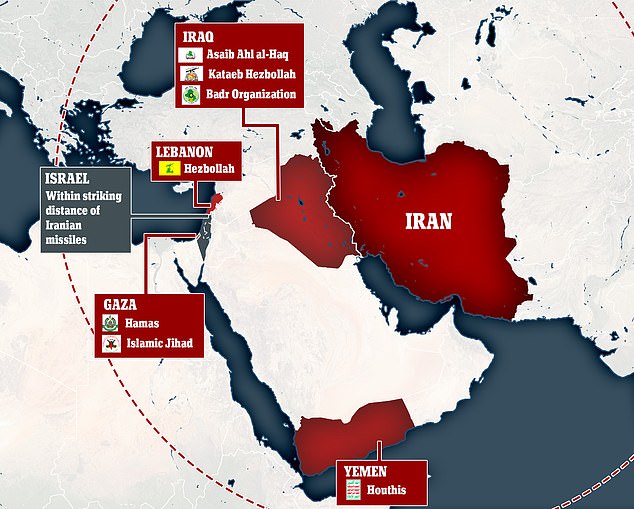Why in news?
Iran’s top security and intelligence commander, Major General Qassem Soleimani, was killed in a US drone attack in Baghdad.
What happened?
- General Soleimani was killed in an airstrike, for which the US later claimed responsibility.
- The strike was carried out by a drone on a road near Baghdad’s international airport.
- Soleimani had reportedly just disembarked from a plane.
- The blast also killed others including Abu Mahdi al-Muhandis.
- He was the deputy commander of the Iranian-backed militias in Iraq known as Popular Mobilisation Forces.
- The strike capped a week of conflict between the United States and Iranian-backed militia in Iraq.
- It started with a rocket attack at a military base, which killed an American contractor.
Who was General Soleimani?
- Soleimani, 62, was in charge of the Quds Force of Iran’s Islamic Revolutionary Guard Corps (IRGC).
- IRGC was designated as a Foreign Terrorist Organization by the US in 2019.
- The Quds Force undertakes Iranian missions in other countries, including covert ones.
- Soleimani, who had headed the Quds since 1998, had looked after intelligence gathering and covert military operations.
- He had also drawn immense influence from his closeness to Iran’s supreme leader, Ayatollah Ali Khamenei.
- He was seen as a potential future leader of Iran, according to various reports.
- Given Soleimani’s influence, observers have equated his killing with the killing of a U.S. Vice President.
- More than anyone else, Soleimani has been responsible for the creation of an arc of influence, which Iran terms its ‘Axis of Resistance’.
- It extends from the Gulf of Oman through Iraq, Syria, and Lebanon to the eastern shores of the Mediterranean Sea.

How did Soleimani rise to this stature?
- In 1979, Ayatollah Ruhollah Khomeini’s rebellion toppled the Shah in Iran.
- Soleimani, then 22, joined the Ayatollah’s Revolutionary Guard.
- During the Iran-Iraq War, Soleimani was sent to the front with the task of supplying water to soldiers.
- But, he ended up undertaking reconnaissance missions, and earning a reputation for bravery.
- In 1998, Soleimani was made head of the Quds Force, which launched his rise to power.
What did the Quds Force do?
- Khomeini had created the prototype in 1979, with the goal of protecting Iran and exporting the Islamic Revolution.
- In 1982, Revolutionary Guard officers were sent to Lebanon to help organise Shia militias in the civil war.
- This eventually led to the creation of Hezbollah.
- The IRGC including the Quds Force has contributed roughly 125,000 men to Iran’s forces.
- It has the capability of undertaking asymmetric warfare and covert operations.
How had Soleimani’s experience with the U.S. been?
- As Quds head, Soleimani briefly worked in cooperation with the US.
- This was during the US crackdown in Afghanistan following 9/11; Soleimani wanted the Taliban defeated.
- The cooperation ended in 2002 after President George W Bush branded Iran a nuclear proliferator, an exporter of terrorism, and part of an “Axis of Evil”.
- The US was accusing Soleimani of plotting attacks on US soldiers following the 2003 invasion of Iraq, which eventually toppled Saddam Hussein.
- In 2011, the Treasury Department placed him on a sanctions blacklist.
- In recent years, Soleimani was believed to be the chief strategist behind Iran’s military ventures and influence in Syria, Iraq and throughout the Middle East.
- Soleimani has sought to reshape the Middle East in Iran’s favour, working as a power broker and as a military force.
How has the US justified his killing?
- The Department of Defense issued a statement underlining Soleimani’s leadership role in conflict with the US.
- General Soleimani and his Quds Force were said to be responsible for the deaths of hundreds of American and coalition service members and the wounding of thousands more.
- He had orchestrated attacks on US coalition bases in Iraq over the last several months.
- The IRGC FTO designation highlights that Iran is an outlaw regime that uses terrorism as a key tool of statecraft.
- The IRGC, part of Iran’s official military, is said to have engaged in terrorist activity or terrorism since its inception 40 years ago.
- As per the U.S., the IRGC has been directly involved in terrorist plotting; its support for terrorism is foundational and institutional, and it has killed US citizens.
What are the implications?
- The strike has left the Middle East vulnerable, with possible repercussions beyond the region.
- Iranian President Rouhani said the killing would make Iran more decisive in resisting the US.
- The Revolutionary Guards said anti-US forces would invite revenge across the Muslim world.
- Reportedly, US officials were braced for Iranian retaliatory attacks, possibly including cyberattacks and terrorism, on American interests and allies.
- Israel, too, was preparing for Iranian strikes.
- The killing could have a ripple effect in any number of countries across the Middle East where Iran and the US compete for influence.
- The State Department urged US citizens to leave Iraq immediately.
- Oil prices have already jumped by $3 a barrel.
- In India, a high-level meeting involving senior officials was held to assess the impact of a price rise and to review contingency measures.
Source: Indian Express
